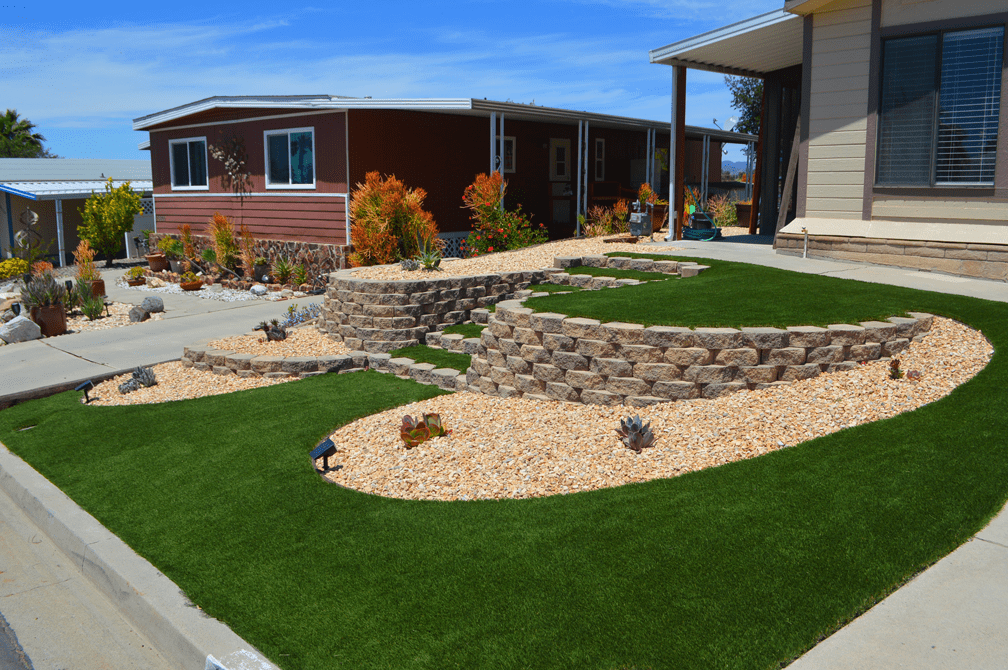
Your patio can really bring the exterior of your home together. Whether you are hosting a cookout, or even just lining your driveway, the outdoor pavers you choose can make or break your aesthetic. The materials you use, along with the method you choose to install, are incredibly important to this decision.
So, whether you are looking to install outdoor pavers for the first time, or are looking to replace them, here are a few things to consider:
· What color and texture best fits your home’s look? – Each home has a different look depending on the exterior paint, the shape of the yard, and so on. The color and texture of your outdoor pavers can either accentuate or clash with your home.
· How much will everything cost? – This usually will depend on how much area you want to cover. Once that is set, you must factor in the cost of the materials such as the pavers themselves, concrete or another outdoor adhesive, and sealant. There are also maintenance costs as well.
· What about return on investment? – This is possibly one of the biggest factors to consider when looking into outdoor pavers. Usually, a paved patio could increase the value of your property, particularly when it comes to curb appeal.
· Should you do it yourself or hire someone? – While there are many people out there that would consider themselves to be a “Mr. or Miss Fix It”, sometimes, especially depending on the material you choose for this kind of home improvement project, simply doing it yourself may not be the best plan. It might be best to consider hiring professionals to install the materials for you, especially when considering the potential increase in property value.
First, consider the different materials you might want to use. We’ve taken the time to find 10 of the more popular options people have chosen for their patios.
Outdoor Paver 1
You might choose to use simple concrete outdoor pavers. These are a favorite for a lot of people since they are simple in appearance. They also come in a range of colors, sizes, textures, and finishes. These are also interlocking pavers, which increases their versatility.
Outdoor Paver 2
If you’re looking for something a bit fancier, you might want to investigate stamped concrete. While this is on the pricier side, this is usually a good option for those who like various stones while having the durability of concrete.
Outdoor Paver 3
Brick outdoor pavers are like simple concrete pavers in their simplicity but come in a specific texture. Most of the time, these types of outdoor pavers are used to build firepits.
Outdoor Paver 4
Flagstone is also a good choice. These outdoor pavers come in an interesting pattern and can even be placed on sand or mortar. Like stamped concrete, flagstone can be a bit pricier, but it looks fantastic once it is sealed.
Outdoor Paver 5
Pea gravel may seem like a strange option for a patio, but for patios that may collect water, this is an excellent option to consider.
Outdoor Paver 6
Slate is a great outdoor paver option for those that like the look of flagstone but may not necessarily want the higher price tag. Slate is also a bit more uniform than flagstone, usually only coming in square or rectangle tiles. But if that uniformity is more your style, slate is the way to go.
Outdoor Paver 7
Rubber tiles have become a popular option of outdoor pavers among the DIY crowd. And it’s not hard to see why. They are cheap, easy to install as interlocking pavers, and very versatile in the different styles that are available. This is a relatively new material for patio installation, so it’s easy to be creative with it.
Outdoor Paver 8
When mixed with something like resin, decomposed granite can be used to make a nice patio cover. This is also a good option when mixed with mulch.
Outdoor Paver 9
Good old-fashioned wood creates a rustic look for many patios that never seems to go out of style. Wood does have some drawbacks if you live in a wetter area. But if you happen to be in a drier area, wood can be the way to go, especially if your landscaping plan compliments it.
Outdoor Paver 10
Another innovation for outdoor pavers is recycled materials. Like the rubber tiles mentioned above, if you happen to be a DIYer, you can go into old scrap yards where you can scavenge old brick, cement, and other materials to create your own interlocking pavers and patio.
There are considerably more options to choose from, but this should give you a good starting point.
If you still find yourself stuck on what to choose and how to best go about choosing and installing outdoor pavers for your patio, driveway, or some other place, reach out to a professional landscaper or hardscaper to get their advice and consult with them on what would look best for the exterior of your home.


 Get In Touch
Get In Touch
Recent Comments